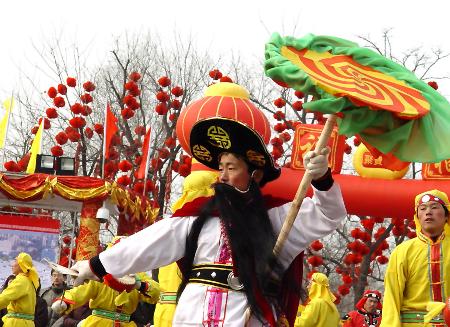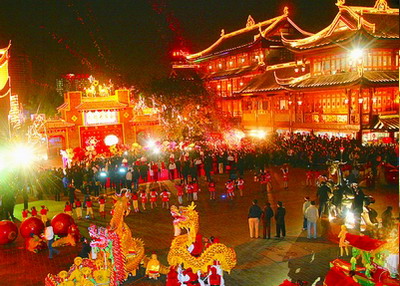
MiaohuiTemple Fairs
By china tour on 2009-11-10 9:14:00 | Beijing Tours
 The Miaohui, or temple fair, is a traditional celebration of the lunar New Year. It originated from Taoism, a Chinese religion. Nowadays the Miaohui has changed in form and different Miaohuis have assumed different themes.
The Miaohui, or temple fair, is a traditional celebration of the lunar New Year. It originated from Taoism, a Chinese religion. Nowadays the Miaohui has changed in form and different Miaohuis have assumed different themes.
The Miaohui, or temple fair, is a traditional celebration of the lunar New Year. It originated from Taoism, a Chinese religion. Some believe that it benefited from the opposition between Buddhism and Taoism, two major religions of China which were in full swing during the Tang and Song Dynasties. Their contention mainly focused on building more temples and attracting more followers. Elaborate rituals and religious activities including the worship of gods, incense burning, folk performances and festivals were carried out regularly around the temples. One of the stand-out features of the event is Xingfo (Buddhist Parade) in which a figure of Buddha was put on a highly decorated float and paraded through the streets. On the anniversary of Sakyamuni's birthday, over 1,000 Buddha figures would be displayed. This later developed into a kind of carnival which involved lion dancing, stage operas, acrobatic shows, etc.
 The gradual secularization of religious activities not only helped popularize Taoism and Buddhism, it has also encouraged commercial dealings among the collective activities. However, it was the Ming and Qing Dynasties or even modern times before massive commercial trading became an important part of Miaohui, as it was once called Miaoshi (market in temple grounds). Miaohui gradually evolved into a place where people gathered for various kinds of folk performances and trading. In many parts of China, attending a Miaohui is an indispensable part of the New Year celebration.
The gradual secularization of religious activities not only helped popularize Taoism and Buddhism, it has also encouraged commercial dealings among the collective activities. However, it was the Ming and Qing Dynasties or even modern times before massive commercial trading became an important part of Miaohui, as it was once called Miaoshi (market in temple grounds). Miaohui gradually evolved into a place where people gathered for various kinds of folk performances and trading. In many parts of China, attending a Miaohui is an indispensable part of the New Year celebration.
Though the original religious intention of Miaohui has weakened somewhat, it still tends to be held in or around temples, monasteries and other religious shrines, which keep attracting disciples and lay people alike. Take Beijing for example; two Miaohui that enjoy an especially long history and popularity are the Baiyunguan (White Cloud Temple) Miaohui and the Ditan (Temple of the Earth) Miaohui. The former is the largest Taoist temple in Beijing and the headquarters of Chinese Taoist Association while the latter is an altar where ceremonies were held to honour and worship the God of Earth.
Nowadays the Miaohui has changed in form and different Miaohuis have assumed different themes. The Miaohui in Beijing's Shijingshan District is called Foreign Miaohui because western culture and food are offered to fair-goers instead of the traditional Chinese equivalents. In Longfusi (Longfu Temple) Miaohui, a tour de force of making folk handicrafts is presented alongside various traditional Beijing snacks. If you have a chance to visit these Miaohuis, you'll probably gain a better overview of what they are all about.
Booking Procedures | Terms & Conditions | Payment Methods | Links | Site Map | About Us | Contact Us | Travel Agent
Copyright 2008, All rights reserved.. itourbeijing.com professional Beijing tour operator and China travel service
TEL: 86-10-85711972 (Universal) 1-888-288-9328 (North America) E-mail: contact@itourbeijng.com
Tours Index | China Tours | Beijing Tours | Xi'an Tours | Shanghai Tours | Guilin Tours | Tibet Tours
China Travel | Beijing Travel | Shanghai Travel | Xi'an Travel | Guilin Travel |The Great Wall Tours
China Golf | Beijing Golf | Shanghai Golf | Xiamen Golf | Beijing Map | Beijing Side Trip | Yangtze Cruise | Travel Picture

